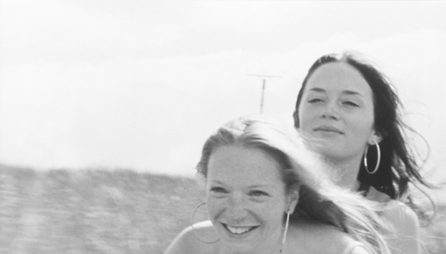BBC Film release rewrites classic lesbian love story with well-worn challenge to social taboos
Is it possible to remake history? Pawel Pawlikowki’s new film, “My Summer of Love,” takes a story of a romantic affair between two young women, adds a pack of lies and, unintentionally or not, reworks the seminal lesbian film “The Children’s Hour” for a new generation.
In a British town of rolling hills, heather and nondescript row houses, redheaded Mona (Natalie Press) spends her days tooling through the countryside on a moped sans motor, killing time. When rich bitch Tamsin (Emily Blunt) trots by on her horse with stories of being thrown out of boarding school for being a corrupting influence, Mona is intrigued. Both girls need to escape—Tamsin from her upper-class, boring lifestyle, and Mona from her townie, going-nowhere existence.
The two could not be from more different worlds; Tamsin plays “The Swan” on her cello, whereas Mona lives above The Swan, a local pub run by her brother. Mona’s anxieties are real. Her father is gone, her mother dead of cancer and her thuggish brother Phil recently converted as a born-again Christian. Tamsin’s dramas are fictitious. Did Tamsin’s sister really die of anorexia? Is her father really having an affair with his secretary?
Whether Tamsin’s heartaches are real or not, Mona is there to comfort her new friend whenever she bursts into tears. Beautiful Tamsin kisses Mona during a swim and it seems second nature to reciprocate. The two stick up for each other. When Tamsin stakes out her father as he visits his mistress, Mona smashes a lawn gnome through the window of his Jaguar. And when Tamsin finds out that Kenny, Mona’s erstwhile lover, is married, she confronts the man’s wife with a story about how he got Mona pregnant, causing her to have an abortion and fall into a catatonic depression.
Tamsin plays at being a grown-up—in her parent’s sprawling manse, she drinks wine and listens to Edith Piaf—but she reveals her naiveté in relaying a story about how Piaf killed her third husband with a fork, and “never even went to prison, because in France, crimes of passion aren’t punished.” She quotes Nietzsche, but is just as willing to interchange his theories with those of Freud.
The signs come early that all will not end well. After Mona and Tamsin get drunk on wine and fall asleep on the tennis courts, Mona wakes up alone at dusk, to find Tamsin inside, eating dinner with her parents. Later, when Mona’s oafish but well-meaning brother comes to Tamsin’s house to find his sister, Mona is left hovering in the stairwell while Tamsin toys with Phil’s religious resolve, laughing in the face of his inability to resist her charms. Mona finally saps the last of Phil’s faith by telling him of her plans to run away with Tamsin. She packs her suitcase and heads to Tamsin’s house, only to find the other girl’s bags being packed as well—for her return to boarding school. “I’ve got to go back to school,” says Tamsin. “We’ve always known that.” The look of bewildered betrayal on Mona’s face is cutting.
Throughout the movie, the camera angles speak volumes about this alienation. As Tamsin first trots up to Mona, who is splayed out in the grass next to her motor-less scooter, the perspective is upside down and between Tamsin and the horse. We next see Mona’s face, half-obscured by the married man who is fucking her in the back of his car. When Mona tells Tamsin about her sexual experiences, the scene is shot through Tamsin’s hand, which holds a cigarette and frames Mona’s mouth. The effect is intense.
Later, when Mona and Tamsin take mushrooms and ride into town on the moped, their faces are wholly obscured by shadow, evoking the feeling of tripping on hallucinogens. It is not until the final scene of the film that we see Mona’s face clearly, eyes open wide as she marches down the road. Tamsin at one point tells Mona, “If you leave me, I’ll kill you.” Mona raises the stakes by replying that she would kill them both. But while Tamsin falls in love with her head, Mona falls with her heart, and what seems at first like a minor difference becomes insurmountable.
At the end of “My Summer of Love” Mona has the same wide-eyed, awakened look that Audrey Hepburn’s character sports as she steps resolvedly into the road at the end of “The Children’s Hour.” The tragic suicide of the scorned woman, Shirley McLaine in “The Children’s Hour,” is a thing of the past. With this single parting camera shot, Pawlikowski subverts the paradigm of lesbian cinematic history.
gaycitynews.com



































